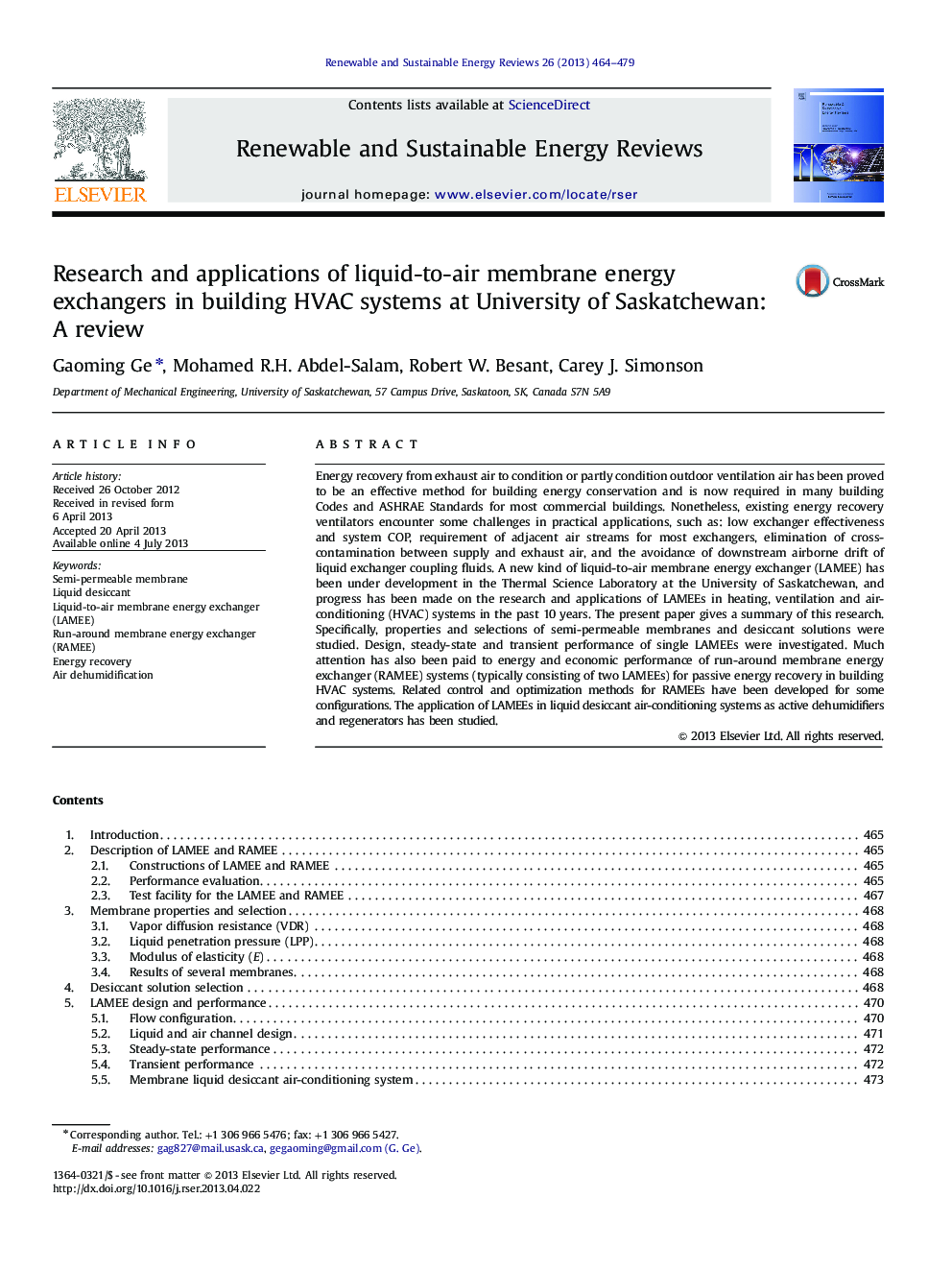| Article ID | Journal | Published Year | Pages | File Type |
|---|---|---|---|---|
| 8121610 | Renewable and Sustainable Energy Reviews | 2013 | 16 Pages |
Abstract
Energy recovery from exhaust air to condition or partly condition outdoor ventilation air has been proved to be an effective method for building energy conservation and is now required in many building Codes and ASHRAE Standards for most commercial buildings. Nonetheless, existing energy recovery ventilators encounter some challenges in practical applications, such as: low exchanger effectiveness and system COP, requirement of adjacent air streams for most exchangers, elimination of cross-contamination between supply and exhaust air, and the avoidance of downstream airborne drift of liquid exchanger coupling fluids. A new kind of liquid-to-air membrane energy exchanger (LAMEE) has been under development in the Thermal Science Laboratory at the University of Saskatchewan, and progress has been made on the research and applications of LAMEEs in heating, ventilation and air-conditioning (HVAC) systems in the past 10 years. The present paper gives a summary of this research. Specifically, properties and selections of semi-permeable membranes and desiccant solutions were studied. Design, steady-state and transient performance of single LAMEEs were investigated. Much attention has also been paid to energy and economic performance of run-around membrane energy exchanger (RAMEE) systems (typically consisting of two LAMEEs) for passive energy recovery in building HVAC systems. Related control and optimization methods for RAMEEs have been developed for some configurations. The application of LAMEEs in liquid desiccant air-conditioning systems as active dehumidifiers and regenerators has been studied.
Related Topics
Physical Sciences and Engineering
Energy
Renewable Energy, Sustainability and the Environment
Authors
Gaoming Ge, Mohamed R.H. Abdel-Salam, Robert W. Besant, Carey J. Simonson,
